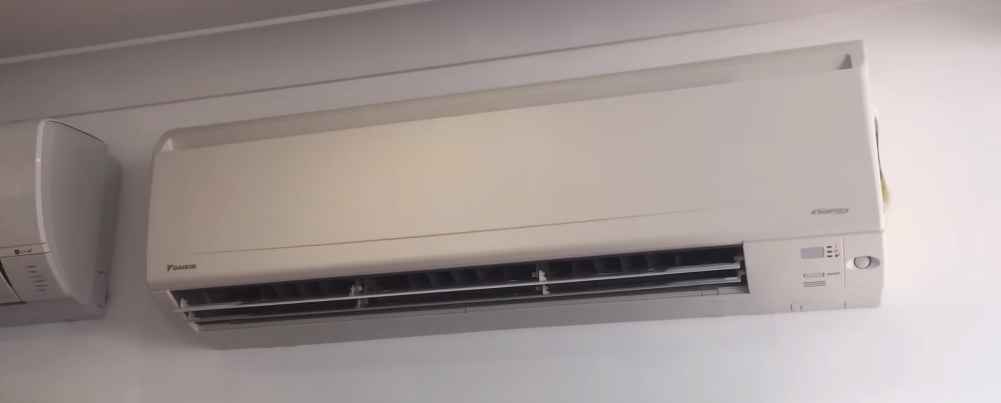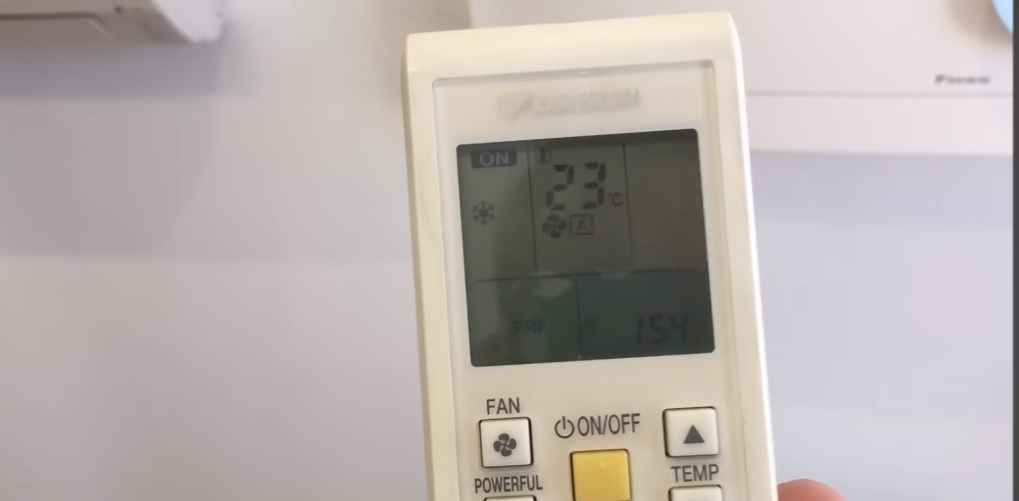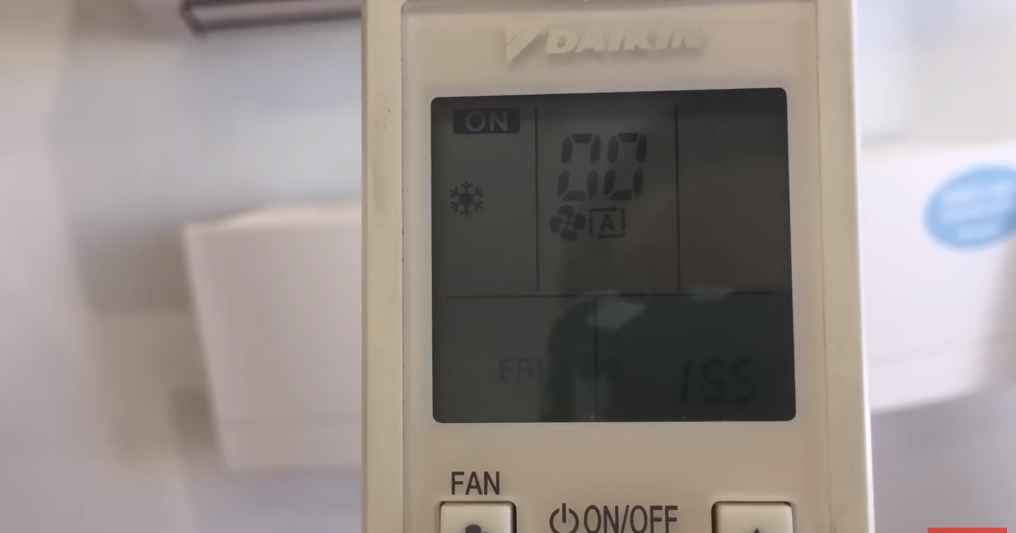If your Daikin AC doesn’t turn on, there are a few possible explanations.
First, check to ensure the unit is plugged in and the circuit breaker has not been tripped.
If the unit is plugged in and the breaker is fine, the issue may be with the thermostat.
Ensure the thermostat is set to “cool” and that the temperature is below the room temperature.
If the thermostat is determined wrong, the problem may be with the air conditioner. Check for any loose wires and ensure the AC receives power from the breaker.

Why Won’t My Daikin AC Turn On? Causes and Solutions
If you’re wondering why your Daikin AC unit won’t turn on, several potential causes exist.
One of the most common causes is a tripped circuit breaker or a blown fuse.
In this case, you can simply reset the breaker or replace the fuse to get the AC up and running again.
Another possibility is a malfunctioning thermostat, which can prevent the AC from turning on. In this case, you may need to replace or repair the thermostat.
A dirty air filter can also cause the AC to malfunction, as it restricts airflow and reduces the cooling capacity.
Therefore, it is important to clean or replace your AC filter regularly to avoid such issues.
If you’re not comfortable troubleshooting the problem yourself, it’s best to contact a professional HVAC technician who can diagnose the issue and recommend the appropriate repair or replacement solution.
Daikin troubleshooting guide
You can do a few things if your Daikin air conditioner is malfunctioning.
First, check to ensure the air filter is clean and all the air vents are clear. If the problem persists, consult the Daikin troubleshooting guide below.
If your air conditioner is not cooling properly, the first thing to check is the thermostat setting.
Ensure that it is set to “cool” and that the temperature is lower than the current room temperature.
Clean or replace the air filter if necessary if the problem persists. The thermostat is the first thing to check if your air conditioner is not heating up.
Ensure that it is set to “heat” and that the temperature is higher than the current room temperature.
If the problem persists, check the air filter and clean or replace it if necessary.
The fan belt is the first thing to check if your air conditioner is making strange noises. Make sure that it is tight and not slipping.

If the problem persists, consult the Daikin troubleshooting guide for further instructions.
If your air conditioner is leaking water, the first thing to check is the condensate drain. Make sure that it is clear and not clogged.
If the problem persists, consult the Daikin troubleshooting guide for further instructions.
Daikin AC reset button
If your Daikin air conditioner isn’t working properly, you may need to reset it. To do this, you’ll need to press the reset button.
This button is usually located on the back of the unit, near the bottom.
Once you’ve located the reset button, press and hold it for about five seconds. If the unit doesn’t reset, try again.
If it still doesn’t work, contact a Daikin dealer or service center for assistance.

What to do when Daikin AC stops working?
When your Daikin AC stops working, there are a few things you can do to troubleshoot the issue.
First, check to see if the AC is receiving power.
If the AC is plugged into an outlet, check to see if the outlet is working by plugging in another appliance.
If the outlet is working, check the circuit breaker or fuse box to see if the AC circuit has been tripped.
You can reset the breaker or replace the fuse if the circuit tripped.
If the AC receives power and the course is not tripped, check the thermostat to see if it is set to the correct temperature.
The AC unit should be running if the thermostat is set correctly. If the compressor is not running, check if the AC unit is frozen.
Once the unit is thawed, turn the AC back on. If the compressor is running but the AC unit is not cooling, check the air filters. If the air filters are dirty, replace them.
You can check the air filters if they are clean. To clean the coils, if they are dirty, use a solution of water and vinegar. Check the refrigerant level to see if the coils are clean.
My Daiken airconditioner is not working and flashing error code HO.
What does this indicate.
This is usually coming because of faulty sensor (mostly indoor temperature sensor). In this case we would love to refer this article for better understanding AC HO Error code Flashing.
My Daikin split system will not turn on, either using the remote or the on/off switch on the inside unit. I have tested the mains AC, and it is OK. Renewed batteries in the remote, and tested it on another unit; it too is OK. Because there appears to be no communication between the remote and the inside unit, no error code shows up. I tried replacing the main PCB and the remote sensor PCB, but the problem persists.
Oh no, I can understand your frustration and disappointment with your Daikin split system not turning on! It must be so aggravating to have tried all those troubleshooting steps and still not getting any results. It’s understandable to feel helpless and overwhelmed in this situation, especially when you’ve already spent time and money trying to fix it.
Anyway, Can you please specify the exact model so that I may be able to to give you more specific hints?
Fact Check:
It seems like you’ve done everything you can to resolve the issue, from testing the mains AC to replacing the main PCB and the remote sensor PCB. It’s frustrating when even after trying all these things, you’re still unable to get your system working.
Hints:
check the wiring between the inside unit and the remote sensor PCB. Make sure that all the connections are secure and that there are no loose wires. Sometimes a loose connection can cause communication issues between the remote and the inside unit.
Sometime silly things come up fetal issue in results
It’s an FTXS35KVMA Split system.
Thanks for hints: i don’t think it’s the remote sensor, since the unit has a physical on-off button which also does not work (i have replaced this too!!)
I wonder if it may have to do with a communication problem between the inside head unit and the outside inverter?
I don’t why im feeling, still your problem with the wiring section. Specially, “power supply or the wiring”
Anyway, I think you should go and inspect by high qualified technician person in this stage.
However, before that i again suggest you to check this section:
Test the voltage: Use a voltmeter to test the voltage at the power supply terminals on the indoor unit. You should see a reading of around 220-240 volts. If there is no voltage, then there might be an issue with the power supply or the wiring.
Inspect the wiring: Check the wiring inside the indoor unit and look for any signs of damage or loose connections. If you find any, repair or replace them.
Check the transformer: Use a voltmeter to test the voltage at the transformer terminals on the indoor unit. You should see a reading of around 24 volts. If there is no voltage, then the transformer might be faulty.
Let’s see your luck! and well wishes too
Thanks Aris. It’s getting beyond my DIY skills/knowledge. Time to call in the experts!
Hi Aris,
It has taken me several more weeks, but I finally got to the bottom of the problem with my A/C not turning on. The indoor unit fan motor! It had shorted, and blown the 3.15A fuse on the PCB. When I put in the replacement PCB, it simply blew the fuse on it as well! Because the blown fuse knocked out the whole PCB, I was not able to use the remote control to diagnose the problem. The fuse is a $1.75 part which, with a bit of soldering, can be replaced on the PCB. as for the motor, it comes apart remarkably easily, and it appears both bearings are worn. I think this probably caused the motor to overheat, which in turn caused it to short. So for $1.75 plus another $134 for a new motor, the unit is up and going again. Certainly less than the cost of replacing the whole system, which was the only solution offered by the technician!
Glad to hear that you were able to identify and fix the issue with your A/C unit! It’s great that you were able to save money by replacing the parts instead of having to replace the entire system. Well done!